Stories
U Minh Ha: Peatlands of Vietnam
Nov 3, 2022 by Sanjeef Kumar; Adrihani RashidBanner Image By : Adrihani Rashid/PFP
After a long car journey from the bustling Ho Chi Minh city, the People For Peat team arrived in Long An to meet with our Peat Expert, Professor Nguyen Khoi Nghia from the University of Can Tho. The team had been working with Professor Nghia for some time, but due to the restrictions imposed as a result of the Covid-19 pandemic, had not had the opportunity to meet face-to-face.
Professor Nghia quickly broke the ice and ushered the team into boats to tour the degraded peatlands. This would become a routine over the next few days, as the team visited several different sites, from Long An, to An Giang, to Can Tho.
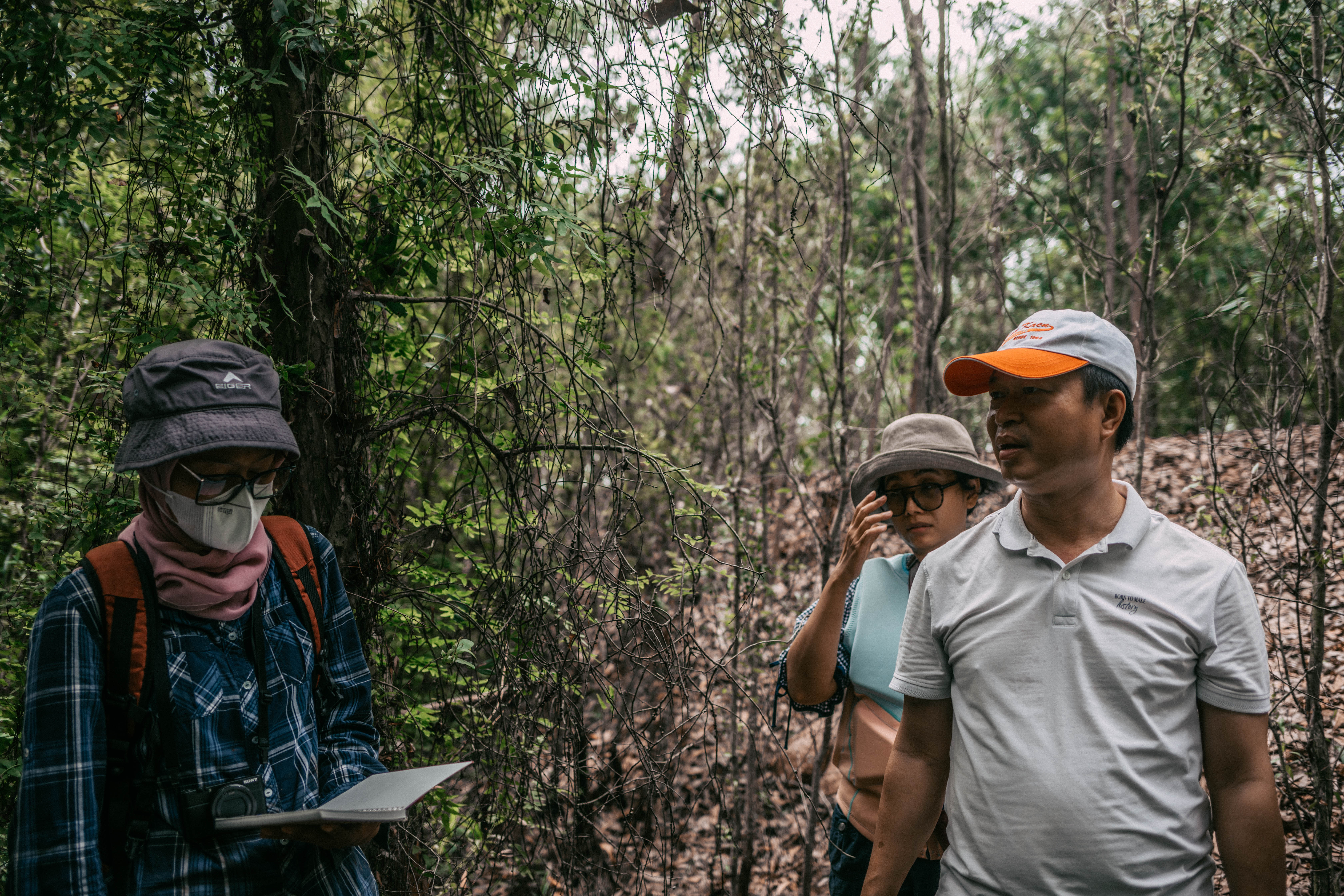
Professor Nghia guiding the PPF Team on a visit to the Tan Binh Village
However, the final day was the highlight of the trip, as the team finally got the chance to visit the U Minh landscape in the Mekong River Delta (MRD), one of the largest river deltas in the world, and home to Vietnam’s last remaining fragments of peat swamp forest and several globally threatened species (Nuwer & Bell, 2014; Tran, 2016).
In comparison to other Southeast Asian countries such as Indonesia, Malaysia, and the Philippines, Vietnam has a very small peatland area (Le & Le, 2021). Within the U Minh landscape, there are two protected wetland forest zones - namely the U Minh Thuong (UMT) and U Minh Ha (UMH) national parks (Le et al., 2016; Tran, 2016). These peatlands are recognized as among the three highly prioritised wetland conservation sites in the MRD (Thai, 2020).
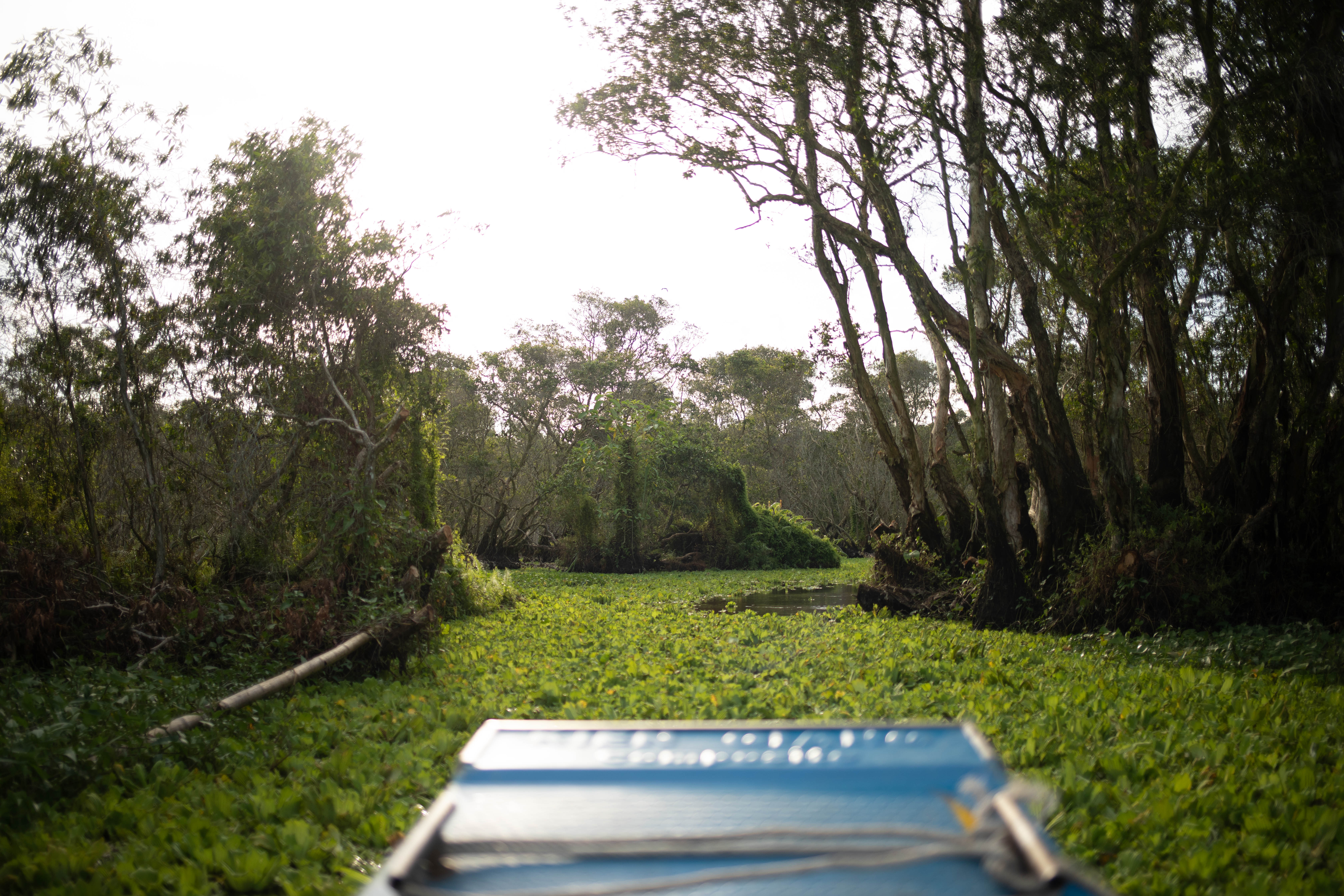
Touring the U Minh Ha peatland area by boat
The UMT and UMH national parks were approximately 12,400 ha and 20,200 ha respectively in 1976, but are currently estimated at only around 3,000 ha and 9,800 ha (Tran, 2016; Le & Le, 2021). This reduction in peatland area is generally due to forest fires and conversion to agricultural land. The U Minh region receives the highest rainfall in the MRD at around 2,360 mm which explains the waterlogged environment that has allowed peat to form there, with the wet season being between May and November when peak rainfall (90% of annual precipitation) is observed (Stuart et al., 2002; Hong et al., 2015).
Most of these peatland areas in the MRD have been lost and degraded primarily due to decades of poor management which include an uncoordinated sectoral approach, limited capacity for peatland management, lack of knowledge about peatland resources, and poverty of local communities. The peatland resources are also lost through conversion to agricultural land, drainage, mining for organic fertiliser production, and fuel (Le & Le, 2021). Apart from that, there was a prolonged period of low rainfall and high temperatures in 2016 which resulted in the drainage of these peatlands and consequent fires (Khanh & Ngoc, 2016). Another blow came in 2002, when timber exploitation and conversion of land for agricultural use dried out the peatlands and caused forest fires in which 17% of the forest area was burned and led to a reduction in peat thickness by at least 20% (Tuan & Wyseure, 2007). This fire wiped out several species, including the big flying fox, fishing cat, Asian palm civet, and wild cats, altering the bird and reptile composition (Van et al., 2021).
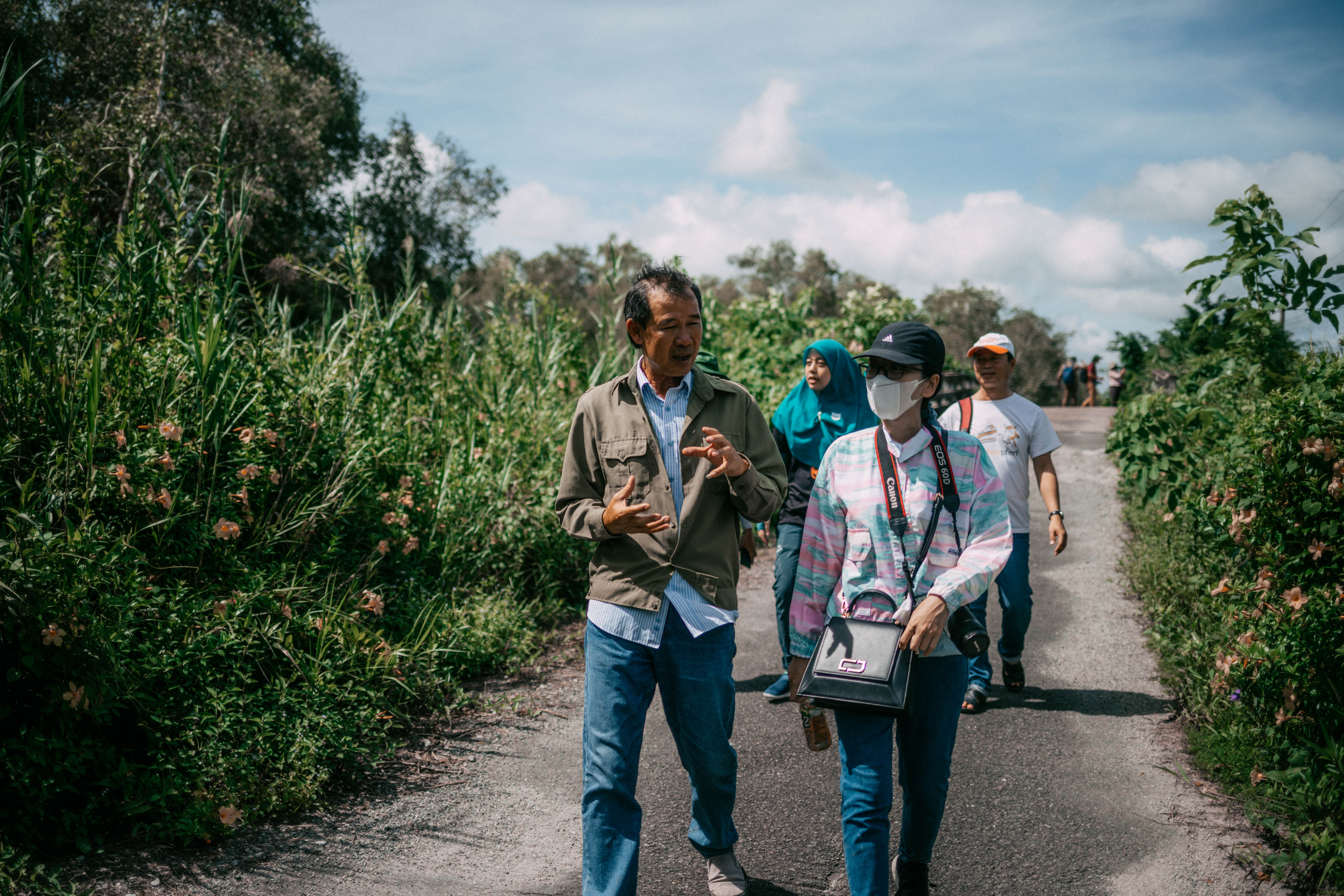
Mr Truyen of the U Minh Ha National Park management team explaining their current strategy on peatland management
Cognizant of these challenges, the management teams of each of these peatlands have been stepping up to the challenge, especially in the face of the looming uncertainties that climate change brings. At U Minh Ha, the management team is working on a model to forecast forest fires and actively monitors changes in forest resources through a central command room at their management office.
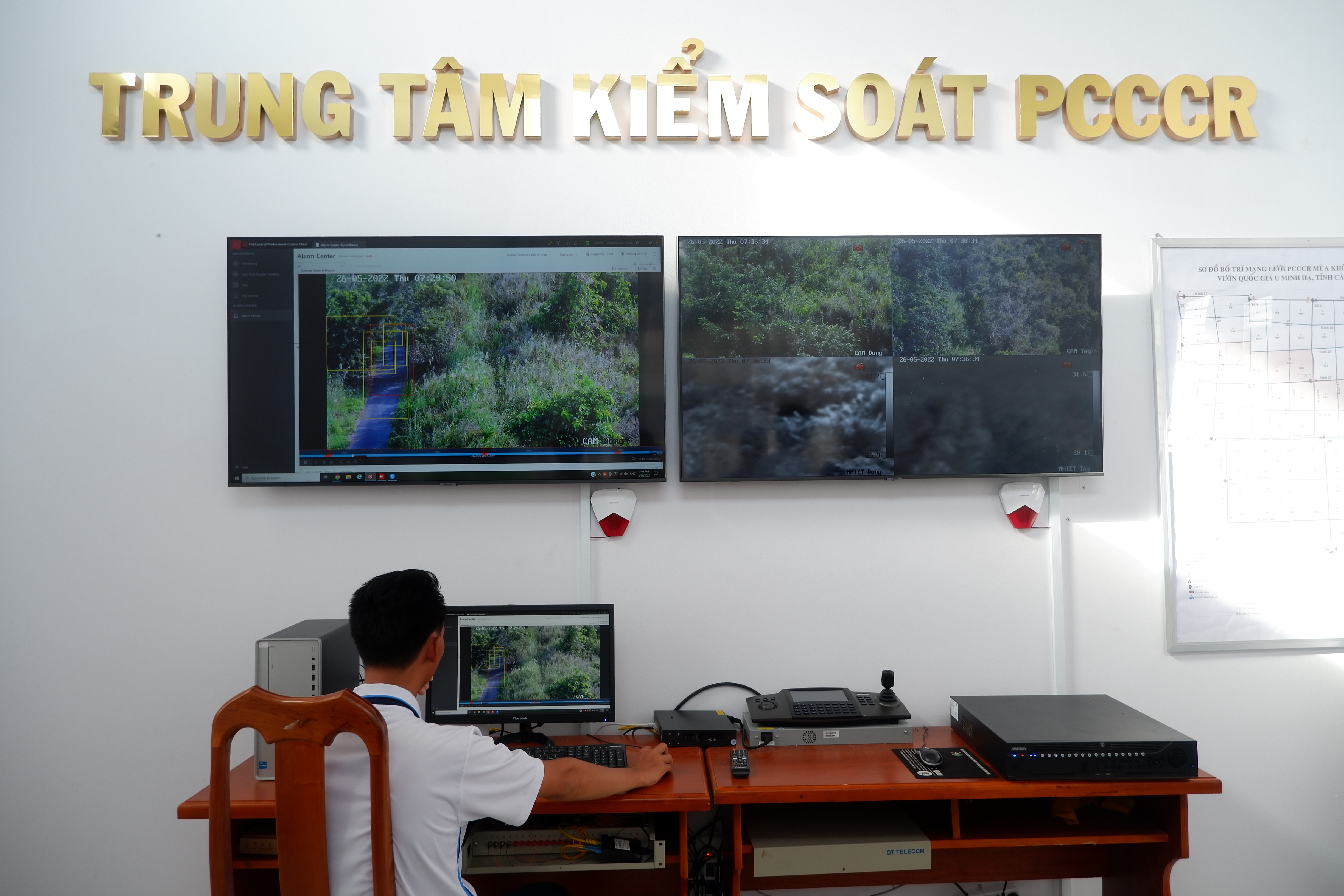
The fire control room at U Minh Ha. Image by Dede Sulaeman, WRI/People for Peat.
One such forest resource is the Melaleuca trees that dominate the landscape. The majority of the trees in the area belong to the Melaleuca family, with the Melaleuca cajuputi species being the most dominant (Van et al., 2021). The Melaleuca trees in UMH have a significant role in carbon sequestration where it was found that Melaleuca cajuputi trees were able to store around 15.18 tC/ha for trees younger than 10 years and 31.76 tC/ha of trees 10 years and older (Dan et al., 2014). A recent study by Hoang and Phong (2021) noted that there was a positive correlation between the diameter of Melaleuca cajuputi tree trunks and their carbon accumulation. Melaleuca cajuputi provides not only economic revenue to indigenous people, but also a habitat for all species in UMH national park (Le et al., 2021a).
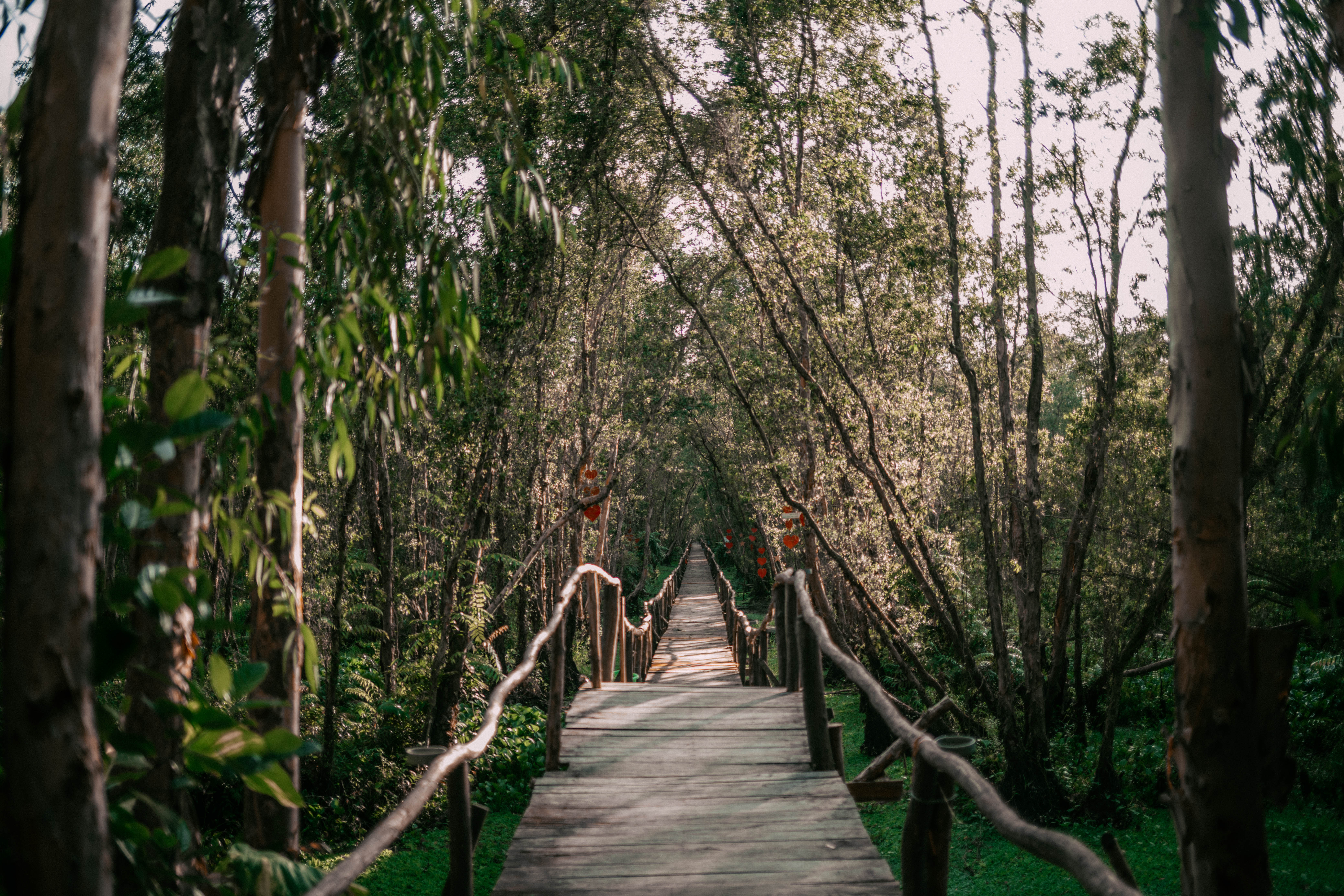
Melaleuca trees play a significant role in carbon sequestration as well as provide economic benefits to peatland communities
Besides Melaleuca trees, the U Minh Ha forest also houses a wealth of medicinal plants which are important to the local community. Around 190 medicinal plants belonging to 75 families and 160 genera are found in UMH, mostly belonging to the herb group (Lien et al., 2020). Six species of fish were also found: Ophiocephalus striatus, Anabas testudineus, Clarias macrocephalus, Notopterus notopterus, Trichogaster trichopterus and T. pectoralis (Clough & Guong, 2012). There are 36 mammal species in 13 families and 8 orders and ten different amphibian species there as well (Thanh et al., 2020).
The U Minh Ha National Park also generates income through ecotourism activities, with boat tours, fishing, and local cuisine for tourists to enjoy. PFP had the opportunity to enjoy a boat tour of the site, taking in the beauty of the peat landscape and looking out for the many birds and small mammals that are listed in the Vietnam Red Book. The pride with which the management team described these animal residents of U Minh Ha was a clear sign of their passion for protecting the wildlife and landscape, and an inspiration to the team on this endless journey to protect our peatlands.
------------------------------------------------------------------------------------------------------------------------------------------------------------------------------------------------------------------------------------------------------------------------------------------------------
Explore Southeast Asia’s Peatlands from the comforts of your own home through our Peatland Travels Video Series.
Head over to our YouTube Channel for more.